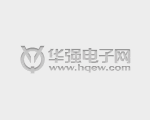Overview:
In order to achieve the purpose of improving the capacity and performance of the photovoltaic inverter, a parallel injection conversion technique is adopted. According to the characteristics of the inverter structure and the current source output of the photovoltaic array, the power-frequency isolated photovoltaic grid-connected inverter structure is selected, and the photovoltaic cell and inverter model are built in the simulation software PSCAD. Finally, the simulation and experiment are verified. The correctness of the theory and the feasibility of the control strategy.
In recent years, grid-connected conversion technology applied to renewable energy has formed a research hotspot in the field of power electronics technology. Grid-connected converters have broad development prospects in renewable energy distributed energy systems such as solar photovoltaic and wind power generation. The important application mode of solar energy and wind power generation is grid-connected power generation, and grid-connected inverter technology is the key technology for solar photovoltaic grid-connected power generation. The inverter used in the photovoltaic grid-connected power generation system is mainly based on the following technical features: wide DC input range; maximum power tracking (MPPT) function; phase and frequency of the grid-connected inverter output current and grid voltage synchronization The waveform distortion is small, meets the quality requirements of the power grid; has an island detection and protection function; the inverter efficiency is up to 92%, and can be operated in parallel. The main circuit topology of the inverter directly determines its overall performance. Therefore, it is important to develop a simple, efficient, and cost-effective circuit topology.
1 Inverter principle This design is a large-scale photovoltaic grid-connected power generation system. According to the literature, the power-frequency isolated photovoltaic grid-connected inverter structure is generally selected, as shown in Figure 1. The DC output from the PV array is inverted by the inverter into AC power, which is boosted and isolated by the transformer and then integrated into the grid. The core of photovoltaic grid-connected power generation system is the inverter, and the power electronic device is the basis of the inverter. Although the technological level of power electronic devices has been greatly developed, it can be produced to meet the highest frequency, high voltage and low EMI. There are still great difficulties in high-power inverters. Therefore, research on the large-capacity inverter topology is a representative solution. As the energy converter between the solar photovoltaic array and the AC grid system, its safety, reliability, inverter efficiency, manufacturing cost and other factors play an important role in the development of photovoltaic inverters, which determine the investment of photovoltaic power generation systems. income. Most of the mainstream PV converters in the market use voltage source converters. Because of the current source output characteristics of photovoltaic cells, in order to meet the characteristics that the DC voltage of photovoltaic cells may vary greatly, the secondary conversion technology scheme is adopted, which leads to the transformation. Reduced efficiency. The high-power current source conversion technology limits the application of the current source type converter because of the high price and low reliability of the forced-off current snubber capacitor. The DC-side current-voltage full-control characteristic of the injection current source converter enables the DC power generated by the photovoltaic cell to be completed only by one-stage conversion. This characteristic makes the current source converter possible to become an efficient photovoltaic conversion technology solution. . 
(Please read the PDF for details)
Window Optical Lenses,Optical Lenses,Window Optical Lens,Calcium Fluoride Glass Window
Danyang Horse Optical Co., Ltd , https://www.dyhorseoptical.com